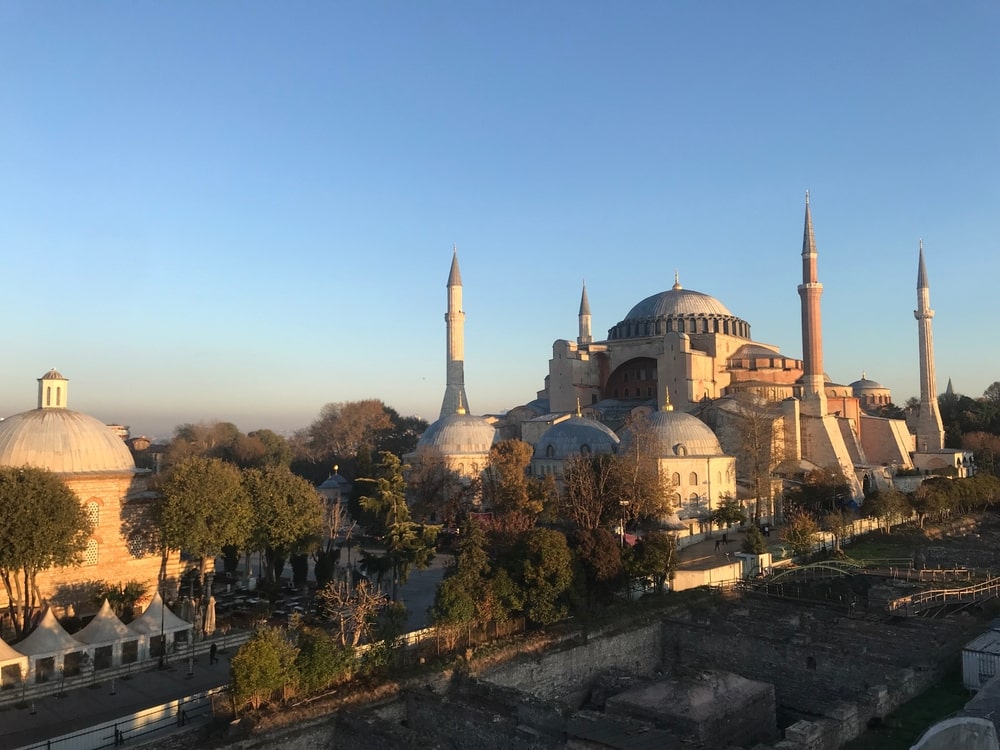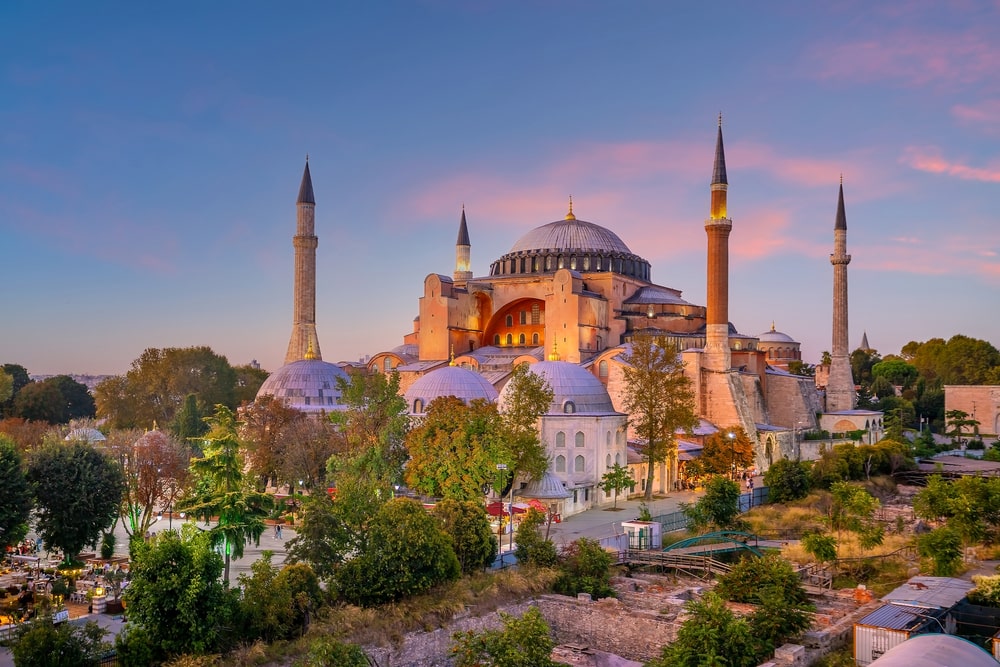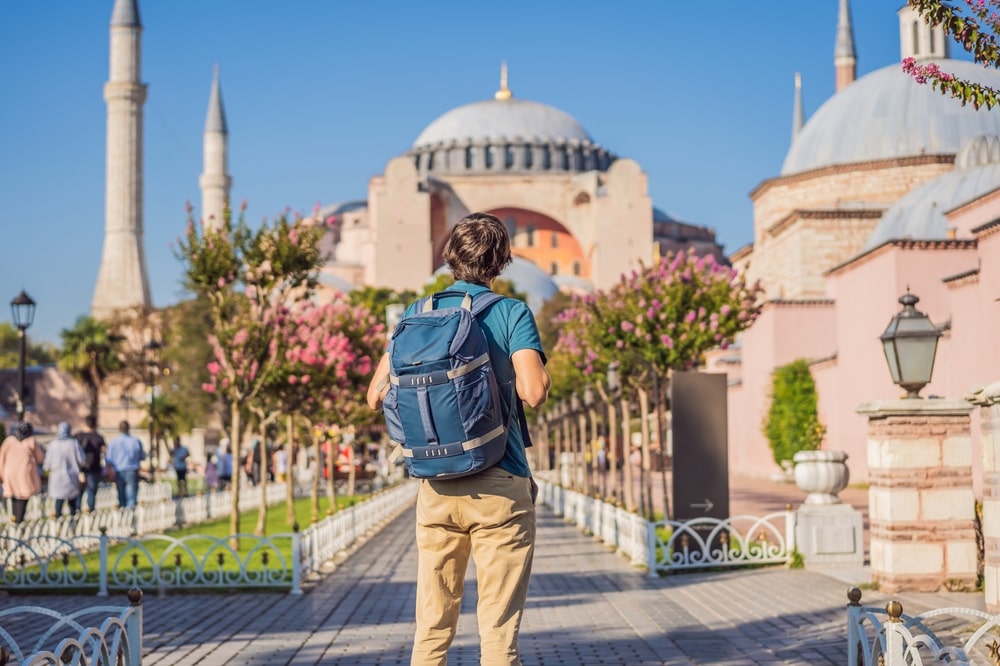Hagia Sophia, located in Istanbul, Turkey, is a magnificent architectural marvel that has stood the test of time. As a history aficionado, visiting this iconic landmark was a dream come true for me. The name Hagia Sophia translates to “Holy Wisdom” in Greek, and it truly lives up to its name. Built in the 6th century, Hagia-Sophia has witnessed the rise and fall of empires, religious transformations, and has become a symbol of cultural and architectural fusion.
Historical Significance of Hagia Sophia

Hagia Sophia has a rich historical significance that spans over 1,500 years. Originally constructed as a Christian cathedral during the Byzantine Empire, it became the center of Orthodox Christianity. The building’s grandeur and intricate mosaics were a testament to the wealth and power of the Byzantine Empire. However, in 1453, when the Ottoman Empire conquered Constantinople, Hagia Sophia was converted into a mosque, marking a significant shift in religious and cultural dominance.
Architectural Features of Hagia Sophia
One cannot help but be in awe of the architectural brilliance displayed by Hagia-Sophia. The building’s massive dome, which was one of the largest in the world at the time of its construction, is a testament to the ingenuity of Byzantine architects. The dome appears to float effortlessly, supported by intricate pendentives and massive buttresses. The interior is adorned with stunning mosaics, marble columns, and beautiful calligraphy, showcasing the fusion of Byzantine and Islamic architectural styles.
The exterior of Hagia Sophia is equally impressive. Its majestic facade, with its massive doors and intricately carved stone, is a sight to behold. The building’s minarets, added during its conversion into a mosque, add a unique touch to the architectural ensemble. Standing in front of Hagia-Sophia, I couldn’t help but marvel at the sheer grandeur and beauty of this historic monument.
Transformation from Church to Mosque to Museum

Hagia Sophia has undergone several transformations throughout its history. After the fall of Constantinople, it was converted into a mosque and underwent significant modifications, including the addition of minarets and the covering of Christian mosaics. However, in 1935, under the directive of Mustafa Kemal Atatürk, the founder of modern Turkey, Hagia Sophia was transformed into a museum. This decision was aimed at preserving the cultural heritage of the building and promoting secularism.
Must-See Highlights Inside Hagia Sophia
Upon entering Hagia Sophia, I was immediately struck by the sheer size and grandeur of the interior. The breathtaking mosaics, depicting scenes from the life of Jesus and various saints, are a testament to the artistic skills of Byzantine craftsmen. The most famous of these mosaics is the Deesis mosaic, which depicts Christ flanked by the Virgin Mary and John the Baptist. The sheer beauty and intricacy of these mosaics left me in awe.
Another must-see highlight of Hagia-Sophia is the Sultan’s Lodge. This elevated platform, accessible only to the sultan and his court, provides a unique perspective of the interior. From here, one can appreciate the vastness of the space and the architectural wonders that surround it.
Tips for Visiting Hagia Sophia
Visiting Hagia Sophia can be an overwhelming experience due to the large crowds and the significance of the site. Here are a few tips to make the most of your visit:
- Plan your visit in advance: Check the opening hours and purchase your tickets online to avoid long queues.
- Go early or late in the day: To avoid the crowds, consider visiting either early in the morning or late in the afternoon.
- Dress appropriately: As Hagia Sophia is a place of worship, it is important to dress modestly. Both men and women should have their shoulders and knees covered.
- Take your time: There is so much to see and appreciate inside Hagia-Sophia, so make sure to allocate enough time for your visit.
- Consider a guided tour: Hiring a knowledgeable guide can enhance your experience and provide valuable insights into the history and significance of the monument. Controversies and Debates Surrounding Hagia Sophia
Hagia Sophia has been at the center of numerous controversies and debates throughout history. The decision to convert the building into a mosque in the 15th century was met with mixed reactions, as it marked a significant shift in religious and cultural dominance. Similarly, the decision to transform Hagia Sophia into a museum in the 20th century was met with both praise and criticism.
In recent years, there has been renewed controversy surrounding Hagia-Sophia. In 2020, the Turkish government decided to convert the museum back into a mosque, sparking international debates. This decision has raised concerns about the preservation of the building’s Christian heritage and the impact it may have on religious tolerance.
Impact of Hagia Sophia on Modern Architecture
Hagia Sophia’s architectural influence extends far beyond its walls. The innovative design of the building, with its massive dome and intricate structural elements, has inspired countless architects throughout history. The concept of using pendentives to support a large dome has been replicated in numerous structures around the world, including the dome of St. Peter’s Basilica in Rome.
Furthermore, Hagia-Sophia’s fusion of Byzantine and Islamic architectural styles has had a profound impact on the development of architecture in the region. The building’s unique blend of ornate Byzantine mosaics and Islamic calligraphy has inspired countless artists and architects, leaving a lasting legacy on the architectural landscape.
Famous Events and Ceremonies Held at Hagia Sophia

Throughout its history, Hagia Sophia has been a venue for numerous important events and ceremonies. During the Byzantine period, coronations, imperial weddings, and religious processions were held within its hallowed walls. Even after its conversion into a mosque, Hagia-Sophia continued to be a site for significant events, including royal ceremonies and Friday prayers.
In recent years, Hagia Sophia has also hosted cultural events and exhibitions, further highlighting its status as a symbol of cultural heritage. The building’s grandeur and historical significance make it an ideal venue for showcasing art and promoting intercultural dialogue.
Verdict
Hagia Sophia is more than just a historic monument; it is a testament to the rich and diverse heritage of Istanbul. From its origins as a Christian cathedral to its transformation into a mosque and museum, Hagia Sophia has witnessed the ebb and flow of history. Its architectural brilliance, intricate mosaics, and cultural significance make it a must-visit for history aficionados. Whether you are fascinated by Byzantine art, Islamic architecture, or the interplay of different cultures, a visit to Hagia-Sophia is sure to leave you in awe. So, plan your trip, immerse yourself in history, and experience the grandeur of this iconic landmark.

